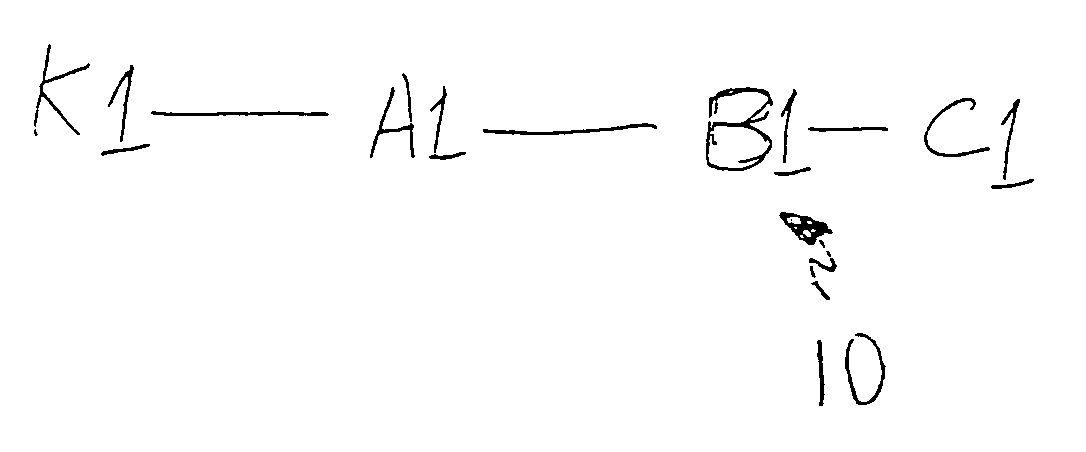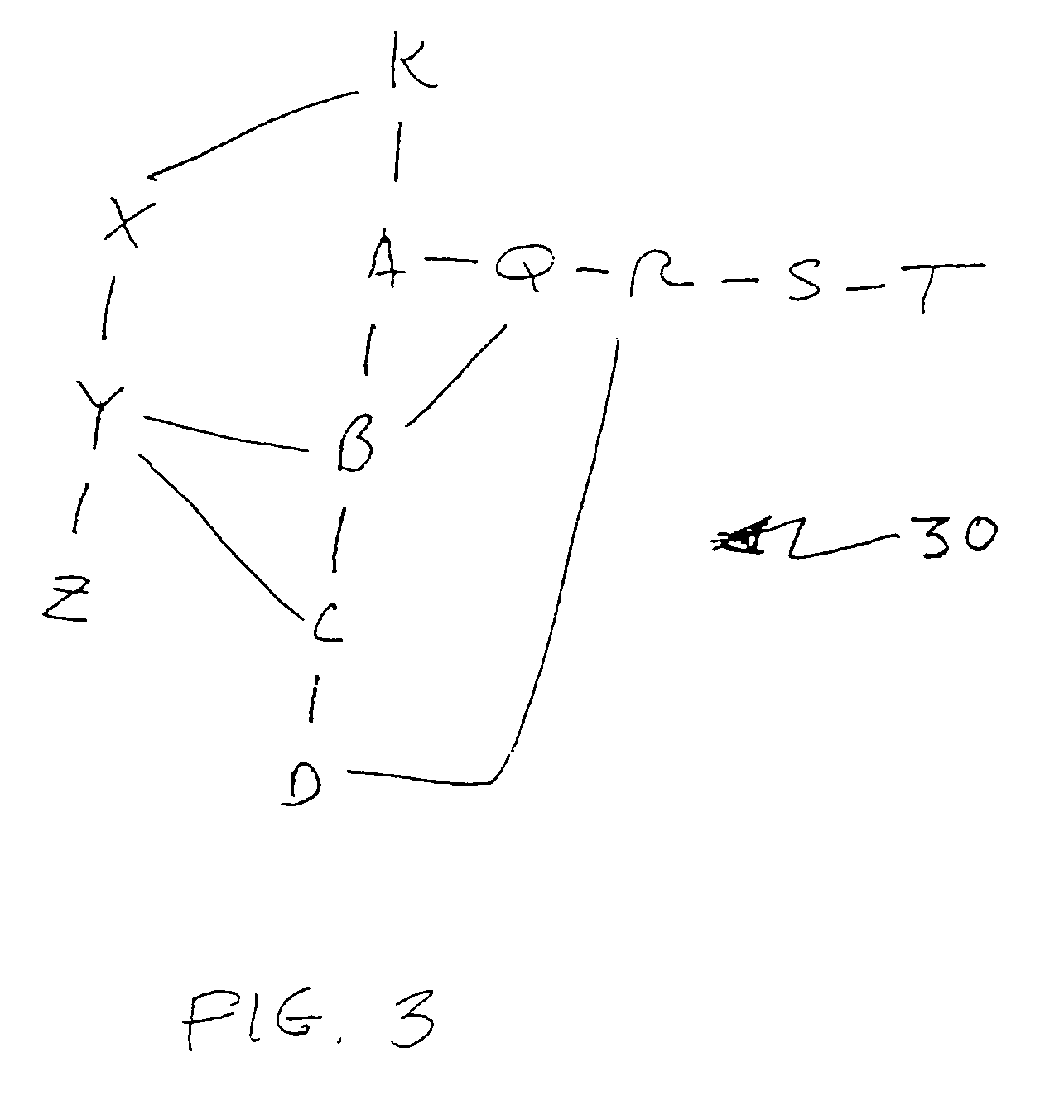Method for determining the delay and jitter in communication between objects in a connected network
- Summary
- Abstract
- Description
- Claims
- Application Information
AI Technical Summary
Benefits of technology
Problems solved by technology
Method used
Image
Examples
Embodiment Construction
[0055]Referring to FIG. 1, a sample network 10 consisting of nodes K1, A1, B1, C1 is illustrated. In executing the following methods, it is preferred that the topology of the network be known. U.S. Pat. Nos. 5,933,416 and 5,926,462 disclose such methods for determining a network topology. These methods are well suited for practitioners of the current invention.
[0056]To determine the transit delay between two nodes, a first node A1 and a second node B1, using a common node K1, which functions as a standard reference node from which all measurements are taken a number of assumptions can be made for simplicity.
[0057]Let R(K1, A1, t) be the round trip delay from the reference point K1 to the node A1 measured at time t.
[0058]It is assumed that the delays are symmetric, i.e., that the delay from a device K1 to a node A1 is the same as the delay from node A1 to node K1.
[0059]Thus,
D(K1, A1, t)=D(A1, K1, t)
where D(K1, A1, t) is the delay between a signal leaving node K1 directed towards node...
PUM
 Login to View More
Login to View More Abstract
Description
Claims
Application Information
 Login to View More
Login to View More - R&D
- Intellectual Property
- Life Sciences
- Materials
- Tech Scout
- Unparalleled Data Quality
- Higher Quality Content
- 60% Fewer Hallucinations
Browse by: Latest US Patents, China's latest patents, Technical Efficacy Thesaurus, Application Domain, Technology Topic, Popular Technical Reports.
© 2025 PatSnap. All rights reserved.Legal|Privacy policy|Modern Slavery Act Transparency Statement|Sitemap|About US| Contact US: help@patsnap.com



